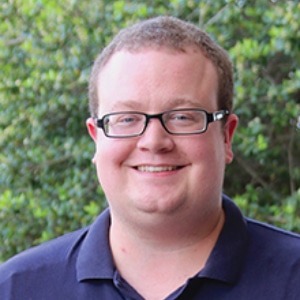From Zero to Sixty: Navigating Student Employee Hiring
College union supervisors know the value of student employment, but hiring processes present a variety of management challenges, especially during hiring surges. Some union operations will see thousands of applications for fewer than 100 open positions in a year, and others will undertake a massive hiring process as part of a new building opening or new staff structure. In such instances, thoughtful strategies for managing mass hiring events can bring consistency, efficiency, and quality to the process, and in many cases those same strategies can be implemented when hiring smaller numbers of employees.
Approaching Hiring
Hiring is a holistic process that not only results in fully staffed operations, but also can bring together an existing staff team and provide a marketing opportunity to potential candidates. In beginning the hiring process, a logical place to start is by establishing preferred staffing levels, but even before that step, managers should consider their team values and how those values will be demonstrated to participants in the process. This connects to the related planning step of determining what qualities that student employees should possess and developing a job description that documents those qualities. An organization’s values can be reflected in the questions asked during application and interview processes, in student employee manuals, training materials, and in rubrics used to rate candidates. For instance, if the organization has a stated value of inclusion, be proactive in mitigating perceived bias to ensure inclusivity is practiced during the hiring process. Oregon State University has stated principles related to its hiring processes, which include those for student employees. The human resources department outlines expectations for documentation, communication, and questioning to better maintain espoused commitments to confidentiality, diversity, and integrity.
Finding the Number
After reviewing or developing a philosophy for a new facility, the first challenge is determining workforce size. Hiring the correct number of student employees is an indicator of successful management, effective program implementation, and student employee retention. Historical information, operational and programmatic changes and fluctuations, facility square footage, traffic counts, and budget all contribute to determining staffing levels. Managers may benefit from reaching out to colleagues through an ACUI community of practice, benchmarking staffing for facilities of similar square footage or program space, and utilizing other facilities on campus to gauge needs.
Many unions and campus divisions hiring students request that those staffers fill out an intent form before the end of a current semester to gauge future semester needs. If a hiring timeline runs from October 1 to December 1, an intent form could be due by November 1, which will allow the team time to know what vacancies might exist. Some positions may be easier to fill than others—finding staff for games room positions may be easy but filling set-up and production crew positions might be more challenging.
Teams opening a new facility usually have a standard formula for estimating staffing: Determine positions, identify shifts and lengths of those shifts, and then set the number of hires for each shift. That’s the approach University of Wisconsin-La Crosse used last year when it opened a new 200,000-square-foot union with about 200 full- and part-time professional and student staff, and it’s the formula San Jose State University is using to double its student staff to 460 with completion of a new recreation center in 2019.
Getting the Word Out
Whether opening a new facility or replacing a large class of graduating student employees, it is important to have a strong pool of applicants for the opportunities in the college union. Strategies for gaining student attention vary from campus to campus, and many rely on a mix of tools: visiting and participating in campus job fairs, digital signage, fliers, tables at orientations and job fairs, centralized campus job boards, and social media that includes visuals and videos. Departments can see great success when promoting openings by utilizing the same strategies already embraced on campus, so reaching out to campus colleagues in housing, recreation, and other departments that employ students can be beneficial.
Implementing a professional talent management software package such as JobX, Taleo, PeopleSoft, Handshake, or PeopleAdmin, either for the facility or the campus, helps create a go-to place for students to browse and apply for openings. These programs also allow for the storage and retention of application and employment data, and provide for year-round job advertising.
Interviewing & Managing
Reviewing applications and managing interviews are crucial parts of the hiring process. Whether an individual or a committee is responsible (or both), the process should be replicable, standard, and consistent from year to year. Additionally, it is desirable to have a master hiring list, housed on a centralized server, that can be updated throughout the process. This structure will support each step of the process and allow for a consistent standard in the review and interview processes for prospective student employees.
REVIEWING:
An initial review of applications is an extra step, but an important one to ensure a strong pool of candidates. At the Georgia Institute of Technology, the Student Center team receives 150 or more applications for anywhere from 20 to 30 openings each semester. A staff team uses a rubric to assess potential employees based on their requirements like having attended an information session about positions or GPA minimums. The team’s initial review removes roughly 20-25% of the pool due to people not completing the application or failing to meet a standard. The remaining candidates are forwarded on for interviews.
INTERVIEWING:
In January 2014, the Armstrong Student Center at Miami University opened its doors for the first time. The previous semester, professional staff began to plan for hiring students as there had never been a student center at Miami and the existing University Center was continuing its operations. In this case, a new building meant that the staff could not rely on previous employees, so managers focused on previous service-related needs, benchmarked other facilities on campus and other campuses, and developed projections that guided a framework. Staff created a process where applicants would come, hear an initial presentation facilitated by a graduate intern, and then meet with each hiring manager for a short time. The prospective employee answered one or two questions with each hiring manager, which allowed staff to share information. After the initial round of hiring at Miami, the staff implemented a standard application and had each hiring manager interview interested staff.
Other schools have developed different systems for interviewing and hiring. Some include a group interview component where a group of applicants are given a problem-solving challenge that requires interacting with one another; other schools conduct all interviews by committee, and still others are conducted by department. When hiring was underway for new event assistants for the new Student Pavilion at Arizona State University, student staffers with experience working events at ASU’s Memorial Union took part in that hiring process.
MANAGING:
The management of hiring is a daunting task, and at Rutgers University, it is coordinated by a professional staff member as a part of their general duties. The student centers at Rutgers employ 350 employees and hire anywhere from 100-120 students every school year. The process is managed administratively by one person with support from an assistant director who manages student employees and from student employee managers in the facility. Rutgers’ hiring process involves initial review using a rubric, an in-person interview on Labor Day, matching employees based on rubric evaluations, and finally onboarding and training.
At the University of Florida all interviews are conducted by committees made up of a cross-section of the union’s service areas. The committees then make recommendations to the union hiring authority, which has the final decision. At the University of Massachusetts–Lowell an associate director of operations works with a graduate student fellow to conduct all initial interviews. Many other unions will break interviews out by the area or department doing the hiring.
Final Steps
The final step in hiring is to provide an offer letter and to update the master hiring list. An offer letter will outline expectations, upcoming training dates, and pay rates. It should also request that students confirm acceptance of the position. Updating the master hiring list is important as it can keep staff across departments abreast of employment statuses, reveal hiring trends in departments, and be used to identify potential employees to hire if vacancies occur between hiring events.
Looking Ahead
A necessary part of hiring good employees is the development and retention that follows. An onboarding process for new workers should include information about campus culture, expectations, and resources available to them through the facility and existing staff.
TRAINING:
At Georgia Institute of Technology, a “student employee experience team” oversees the hiring process and is responsible for planning new employee training sessions and annual follow-up trainings for all student center staff. This committee works with hiring managers to plan break-out sessions, coordinate position-specific training, and direct other opportunities during onboarding. At the University of Florida, where as many as 70 students are hired at a time, the hiring process is conducted by committees and new hires go through a mandatory training workshop.
At Temple University, student employees with experience, specifically building managers, plan and lead training sessions, help create training videos, and participate in “test run” or simulated event set-ups where new student employees, working in teams, are asked to troubleshoot equipment problems and deal with upset clients. In Student Involvement for Student Success: Student Staff in the Learning Commons, Julie Mitchell and Nathanlie Soini found that some students were more able to approach a peer than a professional staff member and that peer leadership had tangible benefits to the students. Involving peers in the onboarding process helps build this relationship early.
RESOURCES:
At Emory University new hires receive a 50-page student employee manual that includes building maps, job descriptions, general building policies, staff meeting schedules, employee competencies, and disciplinary procedures. This helps streamline information delivery to a large number of new hires.
Many schools, including the University of North Carolina–Wilmington, have found
online modules effective and efficient for new student orientations. The modules cover topics such as department and staff introductions, policies, and procedures, and require new employees to complete and pass quizzes after each unit. Learning management platforms like Blackboard and Canvas are also used to house orientation and training materials that new hires must access and indicate they have reviewed.
Once students begin working, many universities and unions use employment management systems like WhenToWork, Humanity, or SubItUp that allow employees smartphone and web access to schedules, scheduling changes, and even shift-switching. Some include training components where employee progress can be monitored.
Conclusion
Positions, titles, and pay rates may vary, but student employees are an essential part of the college union, and the unique role they play allows them to serve as team members and act as ambassadors of the union ideal. Therefore, it is vital that the right students are hired when positions become available. In some situations, hiring large quantities of employees can have the unintended consequence of sacrificing quality in favor of expediency. Additionally, in the case of a facility opening or other one-time occurrence, many managers are inexperienced at mass hiring when it comes time to staffing the new operation. However, strategizing and learning from other campuses such as those discussed here can ease the transition and help ensure a qualified and committed new team.
PRO TIP: Remember that ACUI’s Student Employee Supervisors Community of Practice offers a set of Latest Resources that includes documents and forms related to training best practices, successful habits in hiring, onboarding and evaluating, using the web as a training tool, employee evaluation of supervisor and exit interview forms, and tools for interviewing groups of students.


